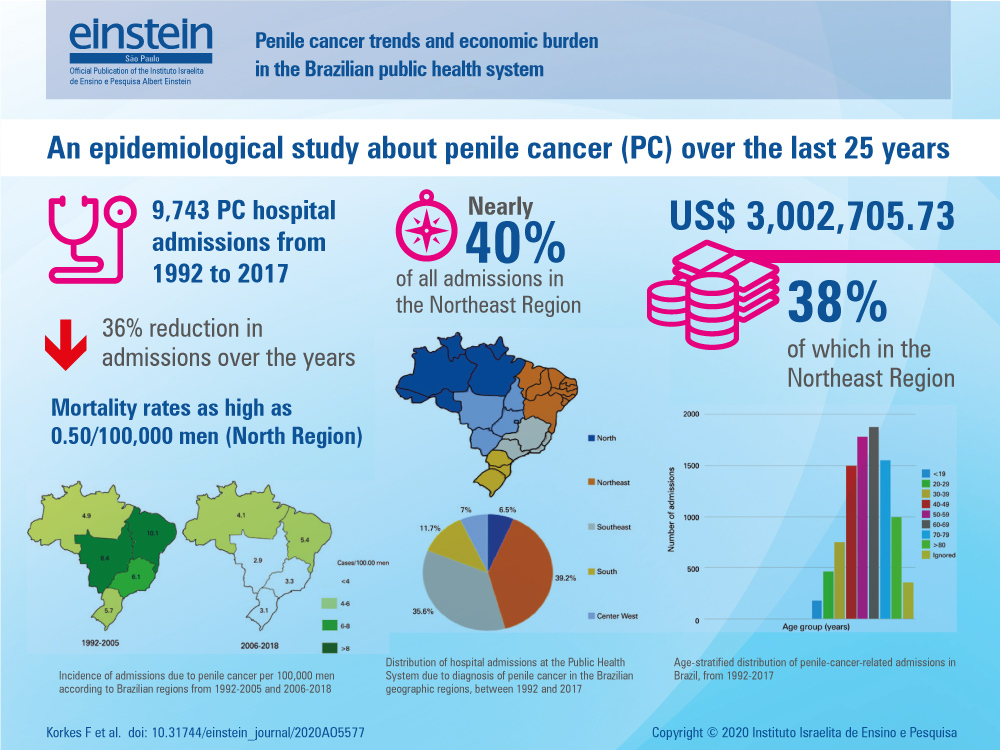einstein (São Paulo). 30/Oct/2020;18:eAO5577.
Penile cancer trends and economic burden in the Brazilian public health system
DOI: 10.31744/einstein_journal/2020AO5577
ABSTRACT
Objective:
To gather information on penile cancer epidemiologic trends and its economic impact on the Brazilian Public Health System across the last 25 years.
Methods:
The Brazilian Public Health System database was used as the primary source of data from January 1992 to December 2017. Mortality and incidence data from the Instituto Nacional de Câncer José Alencar Gomes da Silva was collected using the International Classification of Diseases ICD10 C60. Demographic data from the Brazilian population was obtained from the last census by the Brazilian Institute of Geography and Statistics, performed in 2010 and its 2017 review.
Results:
There were 9,743 hospital admissions related to penile cancer from 1992 to 2017. There was a reduction (36%) in the absolute number of admissions per year related to penile cancer in 2017, as compared to 1992 (2.7versus 1.7 per 100,000; p<0.001). The expenses with admissions related to this condition in this period were US$ 3,002,705.73 (US$ 115,488.68/year). Approximately 38% of the total amount was spent in Northeast Region. In 1992, penile cancer costed US$ 193,502.05 to the public health system, while in 2017, it reduced to US$ 47,078.66 (p<0.02). Penile cancer incidence in 2017 was 0.43/100,000 male Brazilian, with the highest incidence rate found in the Northeast Region. From 1992 to 2017, the mortality rates of penile cancer in Brazil were 0.38/100,000 man, and 0.50/100,000 man in the North Region.
Conclusion:
Despite the decrease in admissions, penile cancer still imposes a significant economic and social burden to the Brazilian population and the Public Health System.
669

